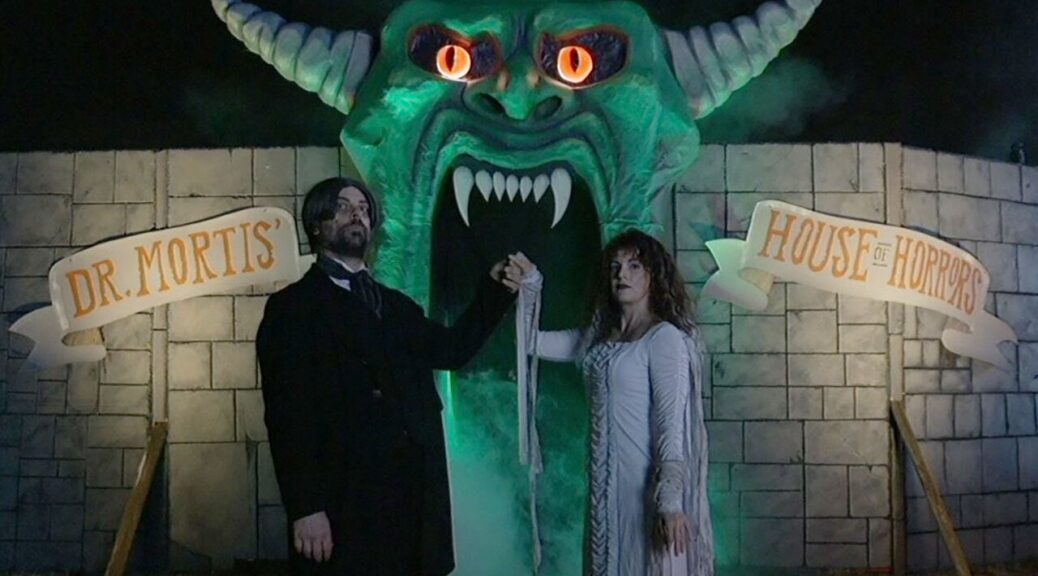V/H/S/Halloween
by Hope Madden
“Hey, aren’t you a little old for trick or treating?”
If you’re looking for bite sized horror to match your fun size Butterfinger, the long running found footage franchise delivers a grab bag of options with V/H/S/Halloween. The anthology of shorts focuses on tales of Halloween. Expect costumes, pranks, chocolate, and a surprisingly high amount of child carnage.
Director Bryan M. Ferguson’s wraparound tale Diet Phantasma may mean more to me than it will to you. It would be hard for me to articulate how much I love horror movies or diet pop. In both cases, it’s an alarming amount of love. So, a tale of haunted diet soda and, beginning the theme, child slaughter?
Yes.
David Haydn is a particular riot as the exec who really needs to get this beverage on the shelf by Halloween.
Paco Plaza’s Ut Sup Sic Infra (As Above, So Below) follows a traumatized young man and a host of cops to a crime scene. This is an efficient little gem with a mystery to solve. Performances are solid all around, and the climax packs a frightening surprise.
Anna Zlokovic’s Coochic Coochic Coo and Alex Ross Perry’s Kidprint are the weaker episodes in the group. Zlokovic’s film follows two high school seniors who make consistently ridiculous choices leading to a nonsensical finale. Kidprint is a nasty short without the clever writing needed to elevate it.
Casper Kelly’s Fun Size gets off to a rough start—full grown adults who decide to be zany and trick or treat. But as soon as that “take one” bowl makes its presence known, things get weird. The balance between brightly colored confection and human dismemberment is impressive. This one’s wrong-headed in the best way.
Likewise, Micheline Pitt-Norman & R.H. Norman’s Home Haunt is a lot of fun. There’s a wholesome charm to this short that could draw your attention to the, again, sheer number of children being murdered. But the concept is sort of darling, and the performances are equally dear. The Normans strike a comedic tone that’s hard to manage, and the result is equal parts nostalgia, cringe, and terror.
You can’t get a Twix every time you dig into that bulk candy assortment bag. But V/H/S/Halloween’s ratio of choice treats to forgettable-but-edible is strong enough to leave you with a little sugar high.














